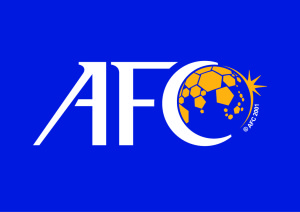By Samindra Kunti
September 9 – Indian football is a parallel world of a struggling national team and a vibrant Indian Super League, but the All Indian Football Federation considers the 2017 U17 World Cup as a stepping stone for the development of the domestic game.
Tonight Indian football fans are bracing for another sad, but familiar sight: their national team, the Blue Tigers, will play Asian powerhouses Iran, with another drubbing a likely outcome. At the same time Alessandro del Piero has landed in Mumbai to sell scooters and Zico is preparing for the Indian Super League in Goa.
The glitz and glamour of the ISL has dramatically changed the dynamics of Indian football. The league operates with franchises, built around aging global superstars and with a number of big name coaches.
It leaves the I-League in a tricky position, with dwindling popularity and a quality vacuum. Since the I-League’s inception in 2007 four clubs have folded: Chirag United Kerala, JCT, Mahindra United and Pailan Arrows. Earlier this summer I-League clubs Pune FC and Bharat FC confirmed that they will not be participating in the 2016 I-League. FC Dempo have also signaled their intent to pull out.
The AIFF is reconsidering the configuration of the Indian football landscape, envisaging a possible merger between the ISL and the I-League in the future.
“It’s clear that ultimately there needs to be one league,” AIFF general-secretary Kushal Das told Insideworldfootball on the sidelines of Soccerex in Manchester. “It’s a good problem to have. There are eleven I-League clubs and nine ISL clubs. At some point we need one league, we are working on it, we are talking to all the stakeholders. It will take time, it’s difficult to outline when it will happen, but it will.”
The spectator response in the first season of the ISL has been excellent,with an average attendance of 26,000 at ISL games, and a television audience of some 400 million viewers. That’s a far cry from the subjugation the beautiful game once suffered under the weight of India’s cricket obsession, enjoying grassroots popularity only in places like Goa, West Bengal and Kerala. But a slickly produced football tournament isn’t going to do it for India.
“Ultimately you need money for the development,” said Das. “Unless you get money, there is no development. That is what we are attempting to do – the creation of the ISL, and in the end of the creation of one profitable and sustainable league, so the money that is generated can go into development.”
The AIFF and Das are pinning their hopes on hosting the FIFA U17 World Cup in 2017 to propel Indian football into the modern era. It will be a first for India, hosting a World Cup, with legacy aims of improving grassroots development, infrastructure and the national team.
Recent results of the Blue Tigers have been profoundly disappointing, with a World Cup qualifying defeat to Guam and a goalless draw against Nepal.
“It’s only when the development program is in place – the U17 World Cup team would probably produce the players we require,” said Das. “They may actually end playing in Europe in the real sense – we don’t want an Indian to play only 15 minutes in a league. No, we want players of calibre who can play regularly in a league. That should help a lot. In about 10 years time, or probably seven to eight years time, the national team will start to do better.”
The national team is in need of a football identity. France, Belgium, Germany and Spain overhauled their football after disappointing results and in Asia Singapore, Australia and Saudi Arabia, with an influx of Belgian technical directors, are envisaging a similar path to recalibrate their footballing identity.
The AIFF have co-operations with the DFB, the FFF and the JFA. “We have a four-year-strategic plan, which was created with the help of FIFA,” explained Das. “The plan focuses on grassroots and youth development and that’s why we bid for the U17 World Cup. That is going to give a great push as far as youth development is concerned. At the top, we are trying to create that economic model, which will help development. Ultimately, that’s the whole idea, the development of the game nationwide.”
Contact the writer of this story at moc.l1734874409labto1734874409ofdlr1734874409owedi1734874409sni@i1734874409tnuk.1734874409ardni1734874409mas1734874409


